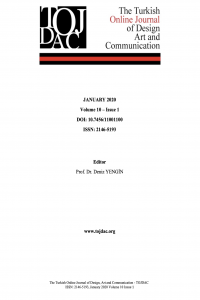Öz
Sustainable development is possible with a balance and harmony in social, economic and
environmental terms. This harmony constitutes the trivet on which the landscape planning is
established. Change and conversion is established on sound grounds with sustainable usage. A
landscape is shaped as a result of the perceptions, needs and behaviors of its habitants, visitors and
users. Assessing landscape elements located in different character areas with their typology is a
method that facilitates perception studies. It will be possible to shape landscapes by placing ideas in a
faster manner with typological generalizations on the structural elements of each character. In this
study, simulations have been formed over different scenarios for the purpose of assessing rural area
elements in a typological manner, and these images have been subjected to participant assessment with
the Preference Experiment (PE). As a result, linear, massive and scattered elements were determined
as the outstanding typology of Mountain Landscape; curved and segmental elements were determined
as the outstanding typology of Water Front Landscape; and linear, point and scattered elements were
determined as the outstanding typology of Plain Landscape.
Anahtar Kelimeler
Kaynakça
- Anonymous, 2000. European Landscape Convention. Explanatory Report, 20.10.2000, Florence. Anonymous, 2011. The Eu Biodiversity Strategy to 2020. Publications Office of the European Union. Anonymous, 2013a. World Population Prospects: the 2012 Revision, http://www.un.org/en/development/desa/news/population/un-report-world-population-projected-toreach- 9-6-billion-by-2050.html, access date: 15.06.2016 Anonymous, 2013b.Yukarı Havza Sel Kontrolü Eylem Planı 2013-2017. T.C. Orman ve Su İşleri Bakanlığı, Ankara. Anonymous, 2014. Agriculture Development, Food Security and Nutrition. UNGA. A/69/279,http://www.un.org/ga/search/view_doc.asp?symbol=A%20/69/279&Lang=E. access date: 15.06.2016. Arnberger, A., Eder, R., 2011. Exploring the Heterogeneity of Rural Landscape Preferences: An Image-Based Latent Class Approach. Landscape Research, Vol. 36, No. 1, 19–40, DOI: 10.1080/01426397.2010.536204. Arriaza, M., Canas-Ortega, J.F., Canas-Madueno, J,A., Ruiz-Aviles, P., 2004. Assessing the Visual Quality of Rural Landscapes. Lanscape and Urban Planning, 69, 115-125. DOI: 10.1016/j.landurbplan.2003.10.029 Brown, T., Daniel T.C.,1987. Context Effects in Perceived Environmental Quality Assessment: Scene Selection And Landscape Quality Ratings. Journal of Environmental Psychology, 7(3), 233-250. Cloquell-Ballester, V.A., Torres-Sibille, A.C., Cloquell-Ballester, V.A., Santamarina-Siurana, M.C., 2012. Human alteration of the rural landscape: Variations in visual perception. Environmental Impact Assessment Review 32, 50–60. Fuante de Val, G., Atauri A.J., Lucio J.V., 2006. Relationship Between Landscape Visual Attributes and Spatial Pattern İndices: A Test Study in Mediterranean- Climate Landscapes. Landscape and Planning, 77 (4), 393-407.DOI: 10.1016/j.landurbplan.2005.05.003 Gruehn, D., Roth, M., 2008. New Approaches in Visual Landscape Assessment and Modelling. International Landscape Architecture Conference Proceedings, Jelgava, Latvia.
Ayrıntılar
| Birincil Dil | İngilizce |
|---|---|
| Konular | Mühendislik |
| Bölüm | Makaleler |
| Yazarlar | |
| Yayımlanma Tarihi | 1 Ocak 2020 |
| Gönderilme Tarihi | 16 Temmuz 2019 |
| Kabul Tarihi | 29 Ekim 2019 |
| Yayımlandığı Sayı | Yıl 2020 Cilt: 10 Sayı: 1 |
All site content, except where otherwise noted, is licensed under a Creative Common Attribution Licence. (CC-BY-NC 4.0)



